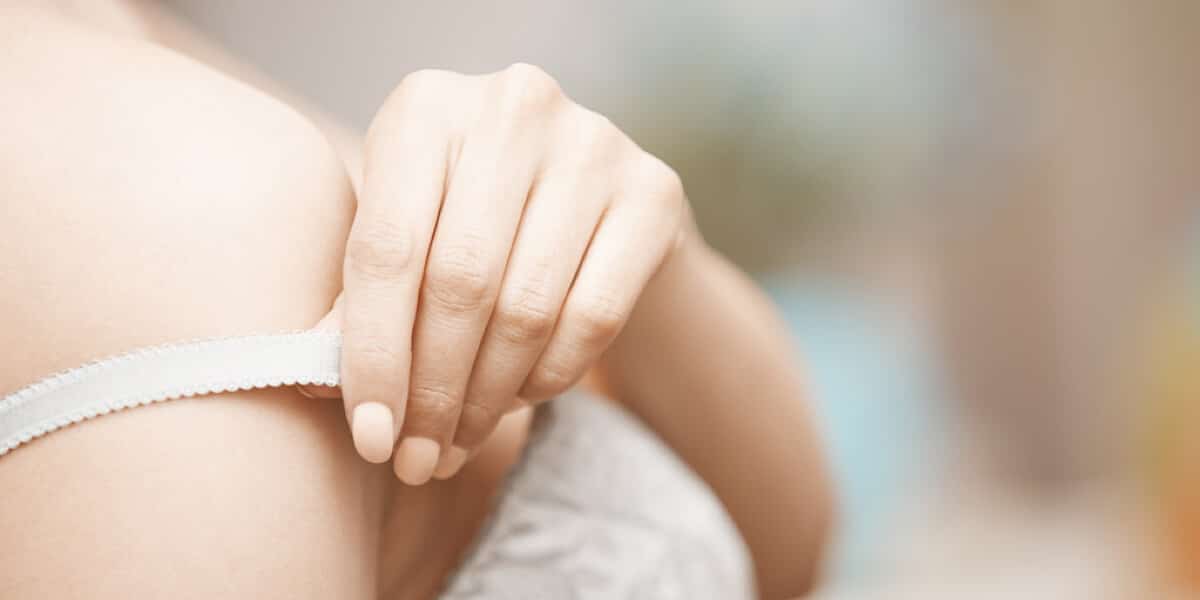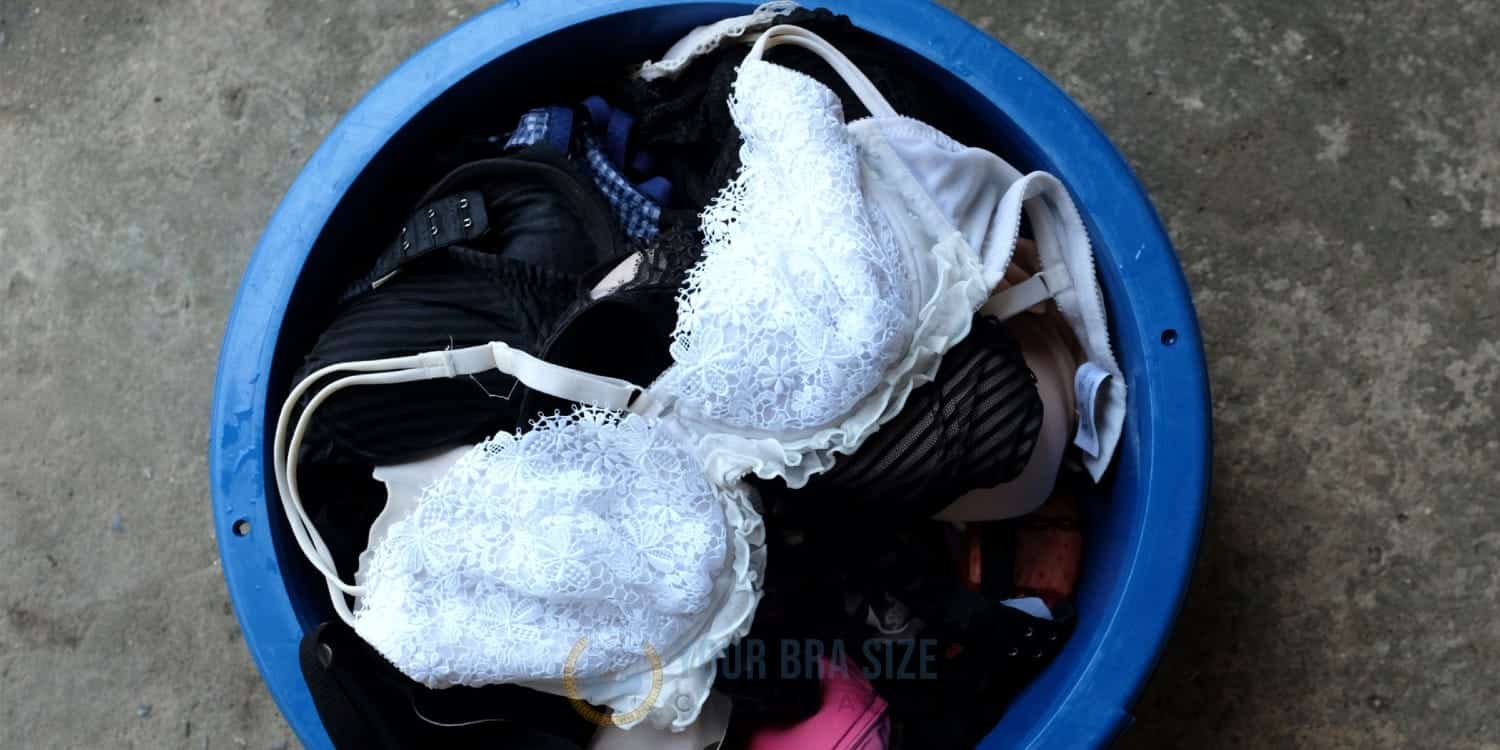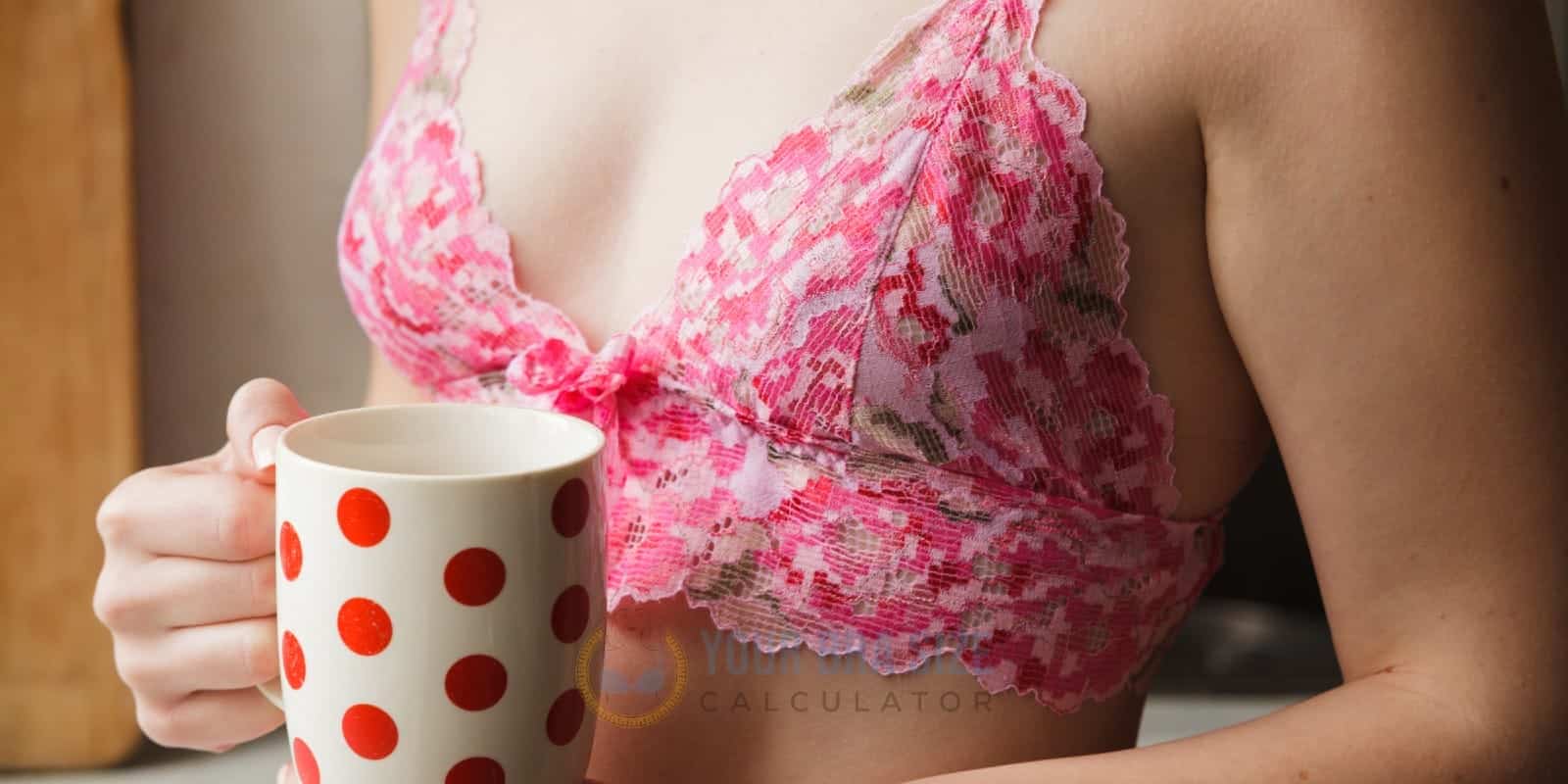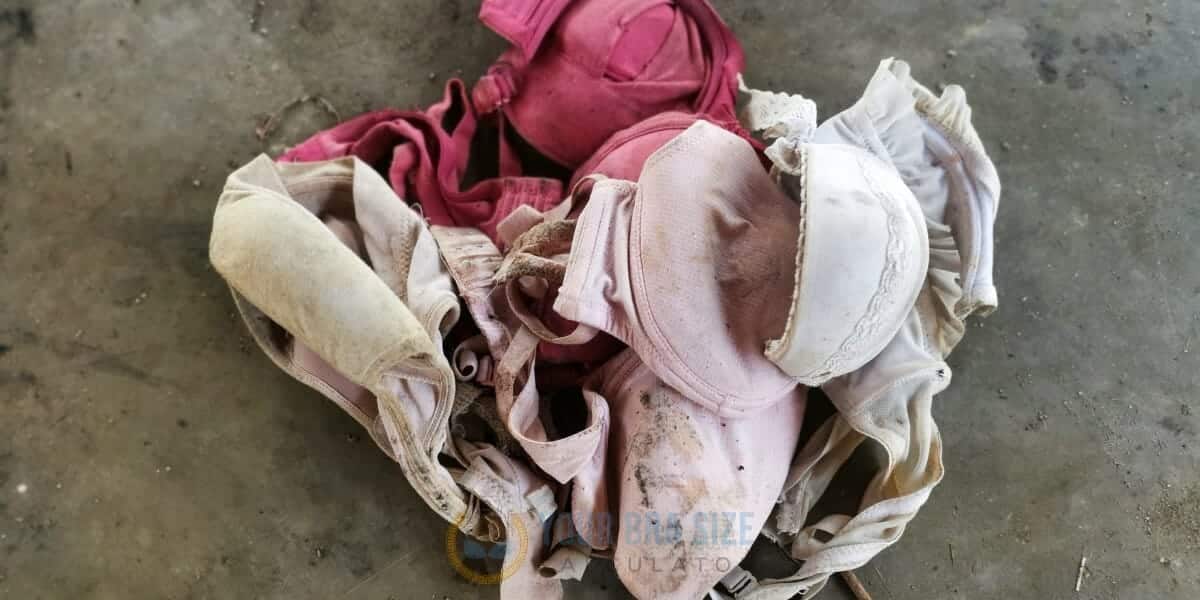Are you fed up with having to adjust your bra straps constantly? Do they slip down no matter what shirt or dress you wear? If so, this article is for you. We’ll discuss why your bra straps keep falling and how you can fix the problem. No more tugging at them in frustration!
Do you find it frustrating when your bra straps fall off your shoulders every time you move? It’s a common issue that many women face. But don’t worry – there are solutions! You can ensure your bra stays put throughout the day with just a few simple adjustments. So let’s dive into why this happens and how to prevent it from happening in the future.
By understanding why and how your bra straps keep slipping off, you’ll be able to take control of the situation and finally enjoy wearing bras without worrying about uncomfortable straps digging into your skin or constantly needing adjusting during the day. Read on to learn everything there is to know about keeping those pesky straps in place!

Causes Of Slipping Bra Straps
Bra strap slipping can be a nuisance and a distraction, causing an uncomfortable feeling throughout the day. It’s not uncommon to experience straps falling while wearing bras. Several causes of this problem can be addressed to provide more comfort and security when wearing bras.
One of the most common causes of slipping bra straps is having a bra size that’s too big. If your band or cup size needs to be corrected, it could result in straps needing to be pulled up due to a lack of support from the fit of the garment. When trying on new bras, ensure you get properly fitted to know what sizes work best for you.
In addition to sizing issues, there may also be other bra fit problems contributing to why your straps keep falling. Your shoulder shape or body type might require different kinds of features, such as wider straps or racerback closures, for them to stay put. Be mindful of the style and construction when shopping for new bras; look for adjustable bands and cushioned back closures that will help keep everything secured all day long.
The next step is to explore various types of bras and their benefits.
Types Of Bras And Their Benefits
Did you know that the average woman owns nine bras? Picking the correct type of bra for your body shape and lifestyle can make all the difference. Let’s look at some popular types of bras, their benefits, and how they might help keep those pesky straps up!
- Bralettes: These lacy or plain bralettes are lightweight and provide minimal support but still offer coverage. They come in various colors and styles, making them fun to wear under more revealing tops.
- Minimizer Bras: Ideal for women with larger busts, minimizer bras reduce chest size by one cup size while providing full-coverage support. Not only will this style helps keep straps from slipping down, but it also creates a slimmer silhouette.
- Push-up Bras: As their name implies, push-up bras add lift and cleavage by pushing breasts together. This style is great for low necklines since it supports and enhances curves.
- Full-coverage Bras: If you’re looking for extra comfort and maximum coverage without padding, then full-coverage bras are ideal. They create smoother lines underneath clothing and often feature wide adjustable straps that stay firmly in place on the shoulders.
- Sports Bras: Whether running errands around town or participating in high-impact activities like jogging or aerobics classes – sports bras have become essential pieces of activewear thanks to their moisture-wicking capabilities and snug fit, which keeps everything secure during movement. Whatever bra you choose, the key is finding one that fits properly, so you don’t have to worry about tugging on straps throughout the day! With proper care and maintenance, these styles can last longer, too – saving time and money in the long run.
How To Adjust Your Bra Straps
It’s essential to have the right fit for bras, and part of that involves making sure your bra straps aren’t falling. If this is an issue, adjusting your bra straps can help create a more comfortable experience. Here are some tips on how to change them appropriately.
The first step in adjusting your bra straps is determining their current length. This will show you where they need to be adjusted for the best fit. To do this, slide both straps up or down until they sit comfortably around your shoulders without slipping off. Make sure not to make the straps too tight, as this could cause discomfort and dig into your skin.
Once you’ve determined the proper length for each strap, it’s time to start changing them accordingly. Start loosening one side at a time with a flathead screwdriver or pen tip if needed. Make minor adjustments until the desired level of snugness is achieved – remember to double-check the other side! Consider using adjustable hooks to quickly and easily change the length of your bra straps whenever necessary.
Adjusting your bra straps isn’t complicated, but it requires patience and attention to detail for them to stay put all day long. Once you have found the perfect spot for your bra straps, enjoy knowing that you can feel secure throughout any activity without worrying about them slipping off or feeling uncomfortable due to ill-fitting ones! With these tips in mind, getting the right fit should no longer be a problem – remember to keep checking back periodically and adjust as needed depending on what outfit or activity you’ll be doing that day!
The Right Fit
Finding the perfect fit for a bra is like trying to find the missing piece of a puzzle. It’s not always easy, but when you do, it can make a huge difference in comfort and confidence. Bra fitting involves more than just finding your size; two parts must be considered: band and cup sizes.
The band measurement is an essential factor when it comes to purchasing the correct size bra. The band should be snug enough around your chest, so it doesn’t ride up or fall when wearing it. If the band is too loose, your shoulder straps won’t provide adequate support and will continually slide off your shoulders. You also don’t want your bars to be too tight, which could cause discomfort and restrict movement over time.
As well as looking at the proper fit of the band, you’ll also need to check out your cup size. Your cups should encase your breast tissue without bulging or gapping anywhere along the sides or top edges. Try on different sizes until you get one that fits correctly without feeling uncomfortable or constricting.
By following these guidelines and taking accurate measurements, you’ll soon have found the key components necessary for achieving optimum comfort from your bras!
Different Types Of Closures
The type of closure used on a bra can make all the difference in keeping straps from slipping down. Many types of closures are available, including hook and eye, eyelet clasps, velcro straps, and snap fasteners.
Hook and eye closures are often found on less expensive bras as they offer essential support sufficient for everyday wear. Eyelet clasps provide a more secure hold than the traditional hook and eye. Still, they may be slightly uncomfortable due to their rigidity. Velcro straps offer adjustable tension, which makes them ideal for larger busts or those with sloped shoulders who need extra security in their fit. Finally, snap fasteners add comfort while offering reliable support throughout the day.
No matter the type of closure, ensuring a proper fit will help keep bra straps from falling down during daily activities. Additionally, ensuring that loose threads are trimmed off before wearing a new bra will improve overall comfort and provide the best fit.
Additional Support Options
If your bra straps keep falling, several additional support options are available. These options range from strapless bras to adhesive bras and can provide extra comfort and security. Here is a helpful table of the different types of supportive bras:
| Type | Description | Best For |
| Strapless Bra | No straps at all | Formal Wear |
| Racerback Bra | Placed over shoulders in an “X” shape | Exercise/Workouts |
| Clear Straps | Thin straps that blend into the skin | Everyday wear |
| Backless Bra | Held up with hooks instead of straps | Special Occasions |
| Adhesive Bras | Stick on directly onto breasts | Low-cut tops & dresses |
Given these options, you no longer have to worry about finding a way to keep those pesky bra straps up! Each type has unique features that make it perfect for specific occasions or activities. Plus, many brands offer variations of these styles, so you’ll be sure to find one that fits your style and needs. With this variety of options, you’ll always look your best without compromising comfort.
Frequently Asked Questions
What Type Of Bra Is Best For Larger Cup Sizes?
Finding the right bra for larger cup sizes is a challenge. But it doesn’t have to be that way! With an understanding of what types of bras work best for full-figure, plus-size, and large-breast women, you can find a supportive fit that won’t slip off your shoulders or pinch anywhere else.
Here are four must-haves when it comes to picking out the perfect plus-size bras:
- Look for features like adjustable straps and closures, which offer more flexibility in terms of sizing.
- Pay attention to the materials used, as certain fabrics may need more support for larger cups.
- Opt for complete coverage styles such as demi cups and balconettes, which cover more area and help keep everything secure.
- Consider underwire options if you want extra lift and support while still being comfortable throughout the day.
Whether you’re looking for a basic t-shirt style or something with intricate details, there are plenty of options when shopping for large-cup bras. While many brands carry standard sizes up to DD and DDD (or F), others specialize in extended sizes from G up to O! So don’t feel limited – shop around until you find one that fits just right; then enjoy feeling fully supported without having to worry about your straps constantly falling anymore!
How Often Should I Wash My Bras?
One of the most critical questions regarding bra care is how often you should wash your bras. Depending on how often and in what conditions they are worn, a good rule of thumb is that they should be cleaned every few wears. Developing a good bra cleaning guide can help keep your bras looking and feeling their best for as long as possible.
There are several tips when it comes to washing bras correctly. To ensure maximum longevity:
- Hand wash them in warm water with a gentle soap or detergent – not too hot, however!
- Always use a lingerie bag or pillowcase, so they don’t get tangled up or snag on other clothing items during the cycle.
- Do not wring out excess water from the cups; press gently between two towels.
- Lay flat to dry away from direct sunlight – never put them in the dryer, as this will damage the fabric over time.
- If needed, lightly iron on the low heat setting only if necessary to smooth out any wrinkles.
Regularly following these bra maintenance steps can help extend the life of each garment by protecting its elasticity and structure from wear and tear due to everyday activities like exercising or simply wearing it around all day. Additionally, keeping your bras clean help reduce bacteria build-up, which could lead to skin irritation or infection. So while there is an approximate number of times you need to wash your bra before replacing it, incorporating these simple methods into your routine will ensure that your bras stay comfortable and provide optimal support regardless of cup size!
Are There Any Exercises I Can Do To Prevent Slipping Bra Straps?
Are you fed up with the constant slipping of your bra straps? Do you feel it’s an endless battle to keep them in place, no matter what you do? Are there any exercises that can help prevent slipping straps and bring a sense of relief to your daily struggles? The answer is YES! Fortunately, there are some fantastic exercises specifically designed for this issue.
These unique exercises will allow anyone – regardless of a cup size or other factors – to fight off slippery straps and regain control over their bras. From strengthening chest muscles to toning shoulder blades, these simple yet effective exercise routines will target each area individually to provide maximum support and comfort from slipping straps. Even those with large cup sizes can benefit significantly from these specific exercises since they’ll be able to find the proper routine that fits their body type perfectly.
One such example is a straight-arm press-up, which helps strengthen chest muscles while engaging back muscles simultaneously. It’s a great way to tighten muscles around the bust area and ensure one’s breasts remain well-supported throughout different movements. Similarly, doing push-ups on an incline improves posture by stretching out tight shoulders and relieving tension in neck muscles. And let’s remember resistance band rows, too; these help tone shoulder blades and upper arms effectively so that even carrying heavy bags won’t cause bra straps to slip down anymore.
Suppose you’re looking for ways to prevent your bra from slipping all day. In that case, these easy-to-follow exercises should give you peace of mind knowing that things are finally under control! Regular practice makes you feel more secure when wearing bras without constantly adjusting them every few minutes. So why wait any longer? Start incorporating these targeted bra strap exercises into your regime today and say goodbye forever to slipping straps!
What Is The Best Way To Measure My Bra Size?
Knowing your bra size is essential for selecting the right fit and style. To ensure a perfect fit, measuring your bra size accurately is vital. A bra size guide or chart can help you determine the proper measurements for the best-fitting bra.
Here are five tips on how to measure your bra size correctly:
- Put on an unpadded, non-wired bra that fits you well – this will provide the most accurate results.
- Measure around the fullest part of your breast with a tape measure placed horizontally across your back. This measurement should be taken in inches and rounded to the nearest whole number.
- Next, measure around the rib cage directly under your bust using a tape measure placed horizontally along your back. Again, take this measurement in inches and round it to the nearest whole number.
- Referring to a bra size chart or guide, use these two measurements (bust and rib cage) together with cup sizes (A–F) to determine your correct band and cup size combination.
- It’s always worth getting professionally fitted by someone who knows their stuff when trying on bras – especially if you have wide-set breasts, as they may require special attention!
It’s also helpful to know that different lingerie brands vary slightly in sizing, so feel free to try different styles from various labels until you find one that fits perfectly! Remember, knowing how to measure yourself for a quality fitting bra correctly is vital for finding support and style.
What Are The Most Common Causes Of Slipping Bra Straps?
As if searching for the right bra size needs to be more challenging – slipping straps are a common issue that can make wearing bras even more of a chore. Like an unwelcome recurring nightmare, bra straps falling or sliding off your shoulders can be exasperating and uncomfortable. But what exactly causes this problem?
The answer to why your bra straps keep slipping lies in several factors ranging from ill-fitting bras to everyday wear and tear. Many women find themselves with loose straps over time due to normal wear and tear on fabric through washing or stretching out during use. Also, when it comes to fit, many women buy one size bigger than their actual measurements so they can have extra support around the ribcage area – but the downside is often looser shoulder straps.
So what can you do about it? If you’re dealing with continuously loosening straps, check whether or not there’s an adjustable feature at the back of your belt since some bras come designed with these handy features! Additionally, silicon grippers along the inside edge of each strap can help them stay put throughout the day without constantly adjusting them while also providing additional comfort and cushioning. Lastly, properly assessing your correct bra size by getting measured will ensure that both band and cup sizes offer adequate support while avoiding problems like slipping straps altogether!
Understanding why bra straps continually slip can help prevent future issues and alleviate any discomfort caused by tightness or looseness—it’s all about finding that perfect balance!
Conclusion
In conclusion, the slipping of bra straps is a prevalent issue that many women face. It can be extremely frustrating to constantly adjust your straps throughout the day or, even worse, have them fall entirely! Fortunately, solutions are available, so you no longer have to suffer in silence.
The first step is determining what bra works best for larger cup sizes. Many bras are designed with these sizes in mind and provide more support than regular bras. Additionally, it’s important to get fitted correctly when determining your size, as an ill-fitting band or cup could cause slippage. Washing your bras regularly will also help keep them in the best condition possible and prevent stretching over time which could lead to slippage.
Finally, I recommend doing exercises such as shoulder rolls and chest presses to strengthen the muscles that hold up the straps on your shoulders, reducing slipping significantly. These tips should help you find a solution to your slipping strap problem so you never have to worry about adjusting them again!








